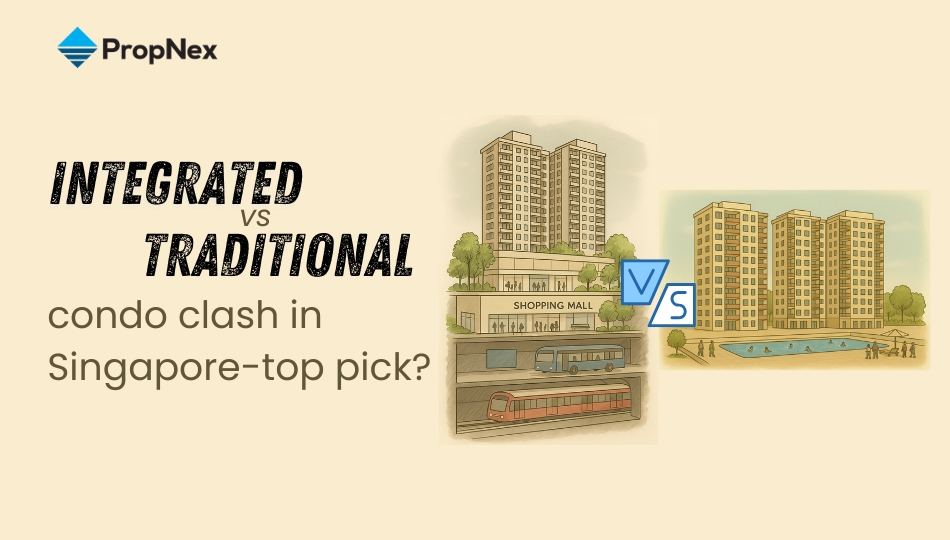PropNex Legal Brief: You May Think Your Condo Is Your Castle, But Please Get Approval Before You Renovate
A man’s home is his castle is a legal doctrine dating a few hundred years back with roots in different countries. The earlier version of the doctrine grants an owner the right to defend himself and property against an intruder, and later morphed into a right to do anything in his home. This metamorphosis continued through time, and just like how (some) castles deteriorate over time, some of these rights have also been altered and diluted.
This article will not explore the history of the doctrine, but will instead tell three tales of home owners’ additions and alterations (“A&A”) disputes with the MCST (Management Corporation Strata Title) of their condo developments, and the lessons we can learn from them.
CASE 1:
In MCST Plan No 1788 (“MCST 1788”) and Lau Hui Lay William and another[1] (“Lau”), the MCST applied to the High Court for Lau to remove the mezzanine attics in Lau’s condo at The Summit.
Key to the dispute is the date the mezzanine attics were built, because the Building Maintenance and Strata Maintenance Act 2004 (Act No 47 of 2004)(the “BMSM Act”) which requires a subsidiary proprietor to obtain authorisation from the MCST prior to effecting any improvement in his lot that would increase the floor area, came into force only on 1 April 2005.
Another point is a planning permission from the Urban Redevelopment Authority (“URA”) is required for such improvements under the Planning Act (Cap 232, 1985 Rev Ed)(the “Planning Act”). Lau did not obtain URA’s prior approval for the improvement.
The High Court held that the mezzanine attics were built before 1 April 2005, and the BMSM Act therefore does not apply. As for the failure to obtain URA’s approval, Lau paid a penalty of $2,400 to URA, and a development charge of $422,807. URA subsequently granted written permission under section 14(4) of the Planning Act for Lau to retain the mezzanine attics.
MCST 1788 lost the case and ordered for costs of $1 to be paid to Lau.[2]
CASE 2:
In Mu Qi and another (the “Mus”) and MCST Plan No 1849 (“MCST 1849)[3], the Mus appealed against a Strata Titles Board’s decision not to order subsidiary proprietors of certain 14th floor units to remove permanent structures on the common property of Bullion Park condominium.
The Mus occupy a unit on the 15th floor. In December 2011, the Mus noticed their neighbour below installing fixed awnings for the balconies at the front and rear of the 14th floor unit. The awnings were affixed to the external walls of the development.
The BMSM Act was already in force by then, and the MCST’s prior approval must be obtained. There were no such approvals by the MCST for the installation of the awnings by the 14th floor subsidiary proprietors. Resolutions passed by subsidiary proprietors in 2018 and 2019 related to the awnings were also in issue, but they will not be discussed here.
After nearly 10 years (as at 22 July 2021), the High Court ordered for the matter to be remitted back to the Strata Titles Board for it to make necessary orders for MCST 1849 to remove the fixed awnings and restore the demolished external walls if a 90% resolution could be obtained within three months from 22 July 2021 for the retention of the awnings.
CASE 3:
In Soo Hoo Khoon Peng (“Soo”) and MCST (“MCST 2906”),[4] Soo sought permission from MCST 2906 to install motorised blinds in the balconies of his double-storey penthouse at Stevens Loft (the “Screen”). MCST 2906 refused and Soo initiated legal proceedings which ended up in the High Court.
Soo started off with the argument that the Screen would not be installed on common property of Stevens Loft, but subsequently conceded that “at least some parts of the walls to which the Screen’s bracket would be affixed were common property”.
After that concession, Soo took the position that the installation of the Screen did not constitute “exclusive use and enjoyment” of the common property onto which the Screen would be installed, and it followed that no approval by way of a 90% resolution at a general meeting of subsidiary proprietors was required.[5] Soo also argued that he was entitled to install the Screen to keep insects out, and also as a safety equipment to prevent harm to his children. It followed that the approval of the MSCT was not required.
MCST 2906 disagreed, and argued that the Screen did not amount to safety equipment, and it would not keep to the MCST guidelines on aesthetic uniformity. MCST 2906 also had in place guidelines on the safety equipment that subsidiary proprietors could install such as invisible grilles (to prevent falls from height) and mosquito nets (to prevent entry of insects).
The issue was finally resolved with the High Court holding that the Screen would not be in keeping with the appearance of Stevens Loft.
Conclusion
For Lau, after a long and expensive legal battle, he succeeded in retaining the mezzanine attics and was awarded $1 of legal cost.
For Mus’ 14th floor neighbours, they had enjoyed their awnings for a very long time at the expense of their neighbours above, due to the “belief” that they were entitled to construct the awnings. This gave rise to potential law suits by the affected subsidiary proprietors to lay a claim against MCST 1849.
For Soo, the Screen was not installed, and the legal costs spent resulted in the Court upholding aesthetic rules, and the available options for invisible grilles and mosquito nets negate the need for the Screen.
What is clear from the three cases cited is the need to be mindful of approval requirements by the condo rules, prevailing laws, and also by government authorities before undertaking any A&A works. Obtaining specialist opinion before any A&A works will also be helpful, especially on the issue of whether common property will be involved. Asking the right questions at the right time, and having questions directed at the right person, is also the way to go. For instance, had Lau asked for approval by the MCST and URA, there will be significant cost-savings to retain the mezzanine attic.
About the writer
Heng Eam joined PropNex Realty Pte Ltd in March 2021, and is presently the Assistant Director for the Legal and Compliance Department. A lawyer by training, he was called to the Malaysian Bar in 2005. From 2007, he practiced law in Singapore for several years before being called to the Singapore Bar in 2014. He then served as legal counsel for another real estate agency, from 2015 till 2021. Besides his specialisation in litigation, he also provides legal counsel for corporate regulatory issues such as the Personal Data Protection Act (PDPA), as well as advises clients on employment, property, and landlord and tenant disputes.
[1] [2023] SGHC 284
[2] The Court is empowered to order costs to be paid by the losing party to the winning party, and the amount will be based on various factors, including the conduct of the parties. In this case, a nominal cost of $1 was awarded to Lau because Lau had, among other things, “benefitted from the lacuna in the law”.
[3] [2021] SGHC 180
[4] [2023] SGHC 355
[5] This is a requirement under section 33(1)(c)(i) of the BMSM Act.










